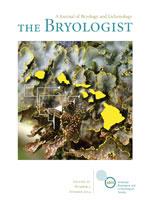We analyzed the desert moss Bryum argenteum Hedw., a dominant moss in biological soil crusts in northwestern China, during dehydration and rehydration. There was almost no change in chlorophyll content between hydrated and almost completely desiccated B. argenteum samples. The amounts of thylakoid protein complexes, including the PSI monomer, PSII supercomplex, the PSII monomer, and LHCII, gradually decreased as the dehydration time of B. argenteum was extended. Analysis by two-dimensional sodium dodecylsulfate-urea-polyacrylamide gel electrophoresis showed that the amount of the PSII core subunits CP47 and CP43 and the PSI core subunits PsaA/B decreased during dehydration. The amount of thylakoid protein complexes increased rapidly during rehydration under light conditions, but increased slowly, and to lower levels, during rehydration in the dark. Rehydration of B. argenteum in chloramphenicol solution under light conditions resulted in a decrease in FV/FM within 10 min. An analysis of chloroplast ultrastructure showed that the number of grana decreased during dehydration. Taken together, our results suggest that the thylakoid protein complexes of B. argenteum degrade during dehydration and then reassemble during rehydration, and that this affects the full recovery of photosynthesis in this species.
How to translate text using browser tools
15 May 2014
Degradation and reorganization of thylakoid protein complexes of Bryum argenteum in response to dehydration and rehydration
Jihong Li,
Xinrong Li,
Cuiyun Chen
ACCESS THE FULL ARTICLE

The Bryologist
Vol. 117 • No. 2
Summer 2014
Vol. 117 • No. 2
Summer 2014
Chloroplast ultrastructure
desiccation tolerance
Mosses
northwestern China
thylakoid proteins




